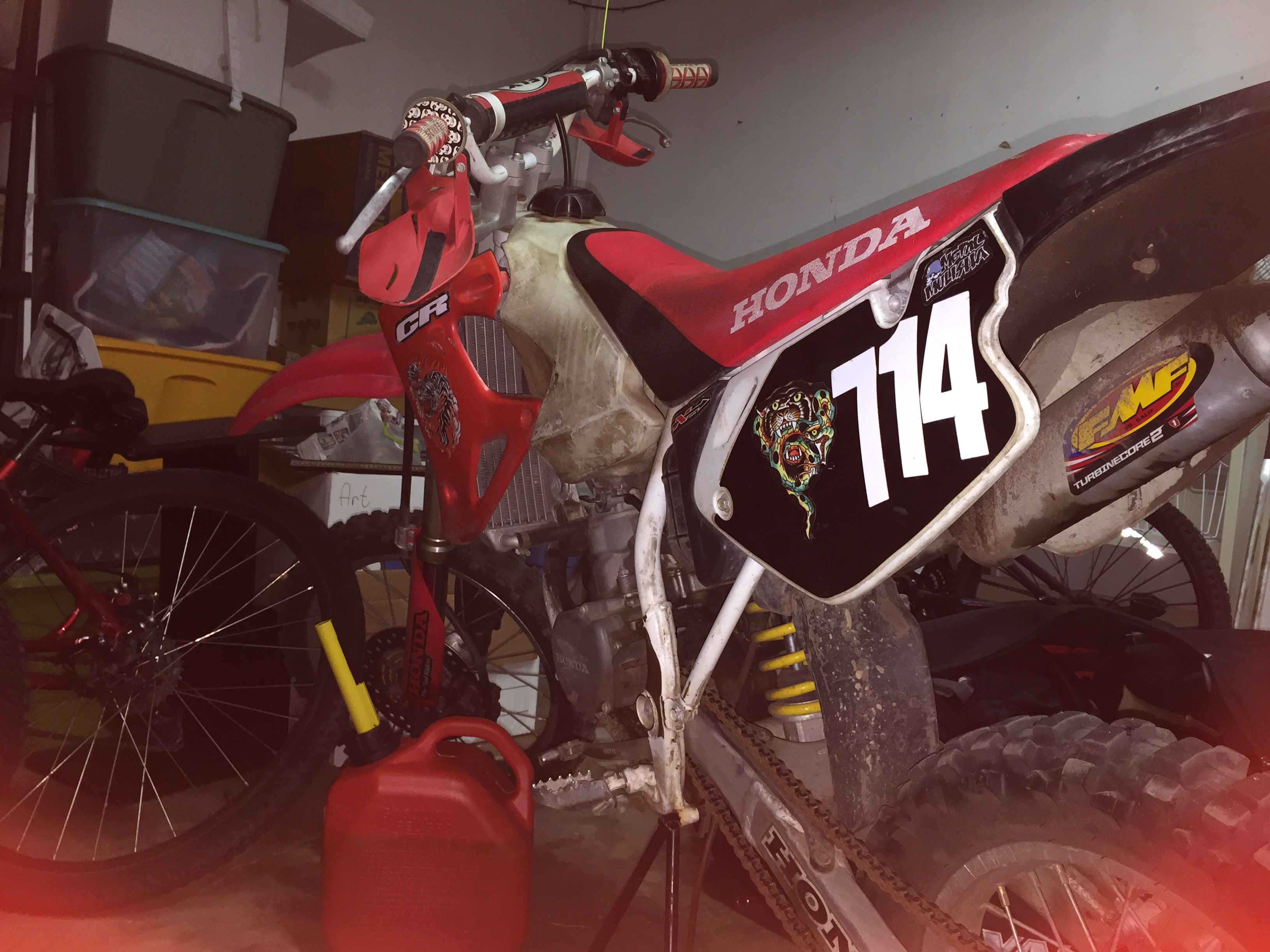Hours and hours of rough riding takes a toll on both the rider and the bike. I like to say for every hour of riding, there's at least 20 hours of maintenance, which is more maintenance per hour than most commercial airlines put into their planes. This includes keeping the dirtbike clean, replacing bolts and screws that get lost during the ride, and fixing it when it breaks. It sounds straight forward, but it's really not. My dirtbike, especially since it's a two-stroke, is finicky at best, but it's also very hardy. If a single thing is a millimeter out of place, my dirtbike will not run right. If a bolt or a nut isn't tightened to the point where it takes my dad five minutes to remove it, it will be lost by the second hour of riding.
At the same time, my dirtbike will refuse to give up even when the expansion chamber is glowing and the muffler is spitting flames. That's why I had to replace the muffler and should replace the expansion chamber. The heat literally burned off the paint and charred the metal on the expansion chamber, and my old muffler had severe carbon backup issues which set on fire during every ride. Even then, it takes a lot of to kill the engine, but thankfully it's rather easily fixed. The only time it's not easily fixed, is when the wrong kind of oil is mixed in with the gas, thus covering everything it touches in a thick, crusty sludge. I'll never make that mistake again.
It's usually fun to fix my dirtbike. If it's not in my dad's shop, it's in Clarke's basement. Of course, when we bring it into the house, it's been drained of all fluids and cleaned of all dust and dirt, but it still has a faint smell of gas and carbon that I may be addicted to. I wouldn't mind if someone made a candle that smelled like that.

I like to take things apart to see how they work. Two-strokes are simple yet complicated at the same time; kind of like me. The engine is almost as basic as it can get, and the way it's put together is pretty straight forward (there's only like 4 major parts; muffler, expansion chamber, engine, and carburetor). But when you dissect the bike, it gets more and more complicated the more you take it apart. My dad knows way more about my dirtbike than I do, but I'm understanding it more and more. The more screwed up my dirtbike gets, the more I learn.
When I first got my dirtbike, it didn't look like it does today. We had a back hitch that was way too small to properly carry the dirtbike, it had no stickers except for a couple of tiny Metal Mulisha stickers that are basically invisible, the throttle was made of cheap plastic and covered in a sticky rubber grip, the gas tank was even crustier than it is now, its muffler was crap, the clutch was bent almost at a 90-degree angle, and it didn't have grip guards.

Over the next year, my dad and I put in some money to change all that. While dad got a new back hitch, I bent the clutch back to a more reasonable position, bought a steel throttle, bought grips that weren't sticky and worn down, used gasoline and bleach to clean the gas tank up the best I could, bought an FMF muffler that wouldn't set on fire or be so loud, bought grip guards for when trail rides turned into the trees, and picked up stickers I found at little touristy shops that I liked. I never went crazy with the stickers, but my dirtbike now looks and rides like my own.



It's also nice to have a back hitch that actually works. Unlike before, dad and I don't spend our drives in tense silence, just waiting to hit the one bump in the road that would launch my dirtbike into the car behind us. It's also easier to load, since the hitch has a ramp. My dad still prefers to just lift the dirtbike onto the ramp, but as strong as I may be, I can't lift my dirtbike completely off the ground, so I can't load it without the ramp. I've tried, and I've failed.
- << Prev
- Next

